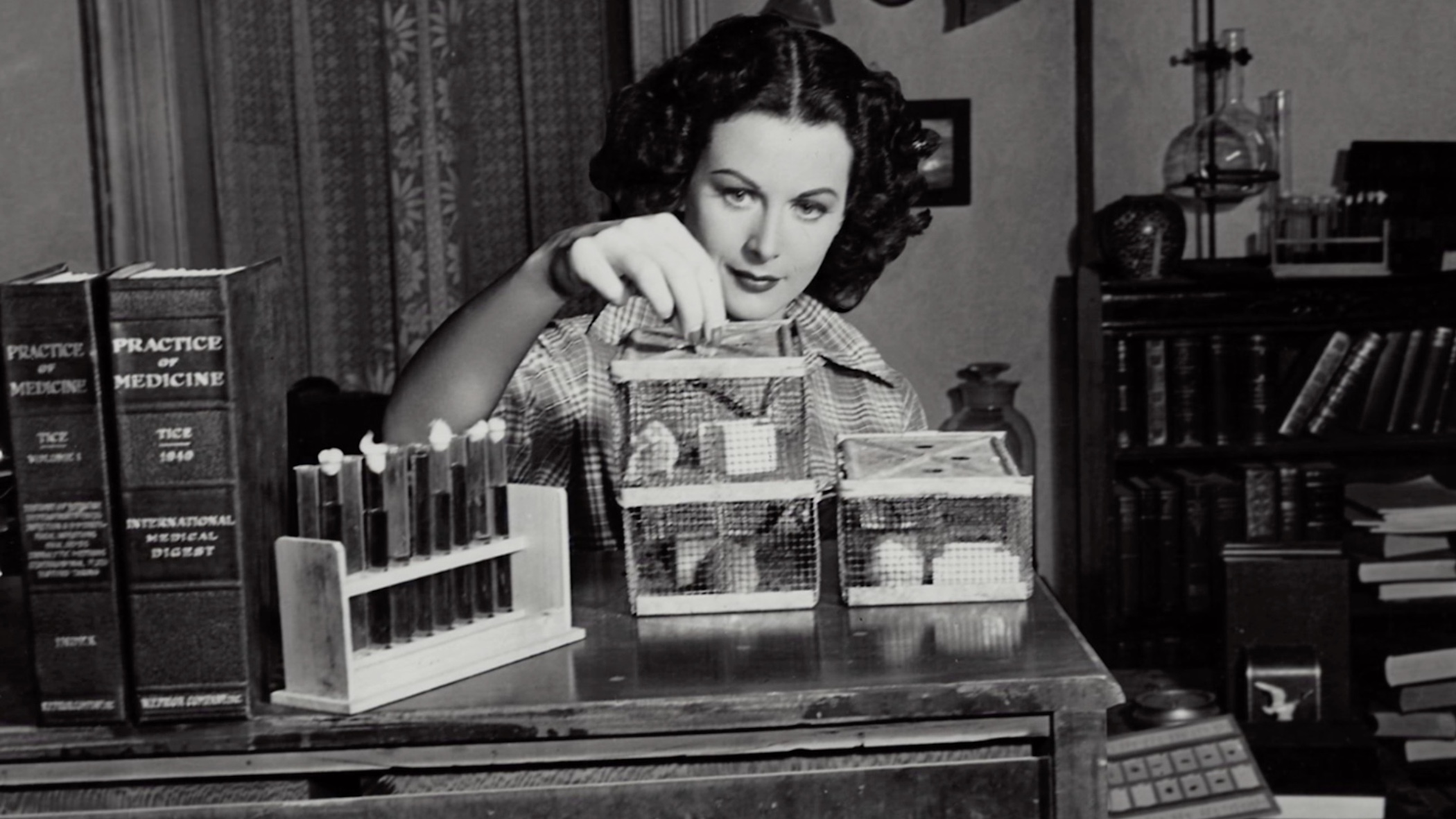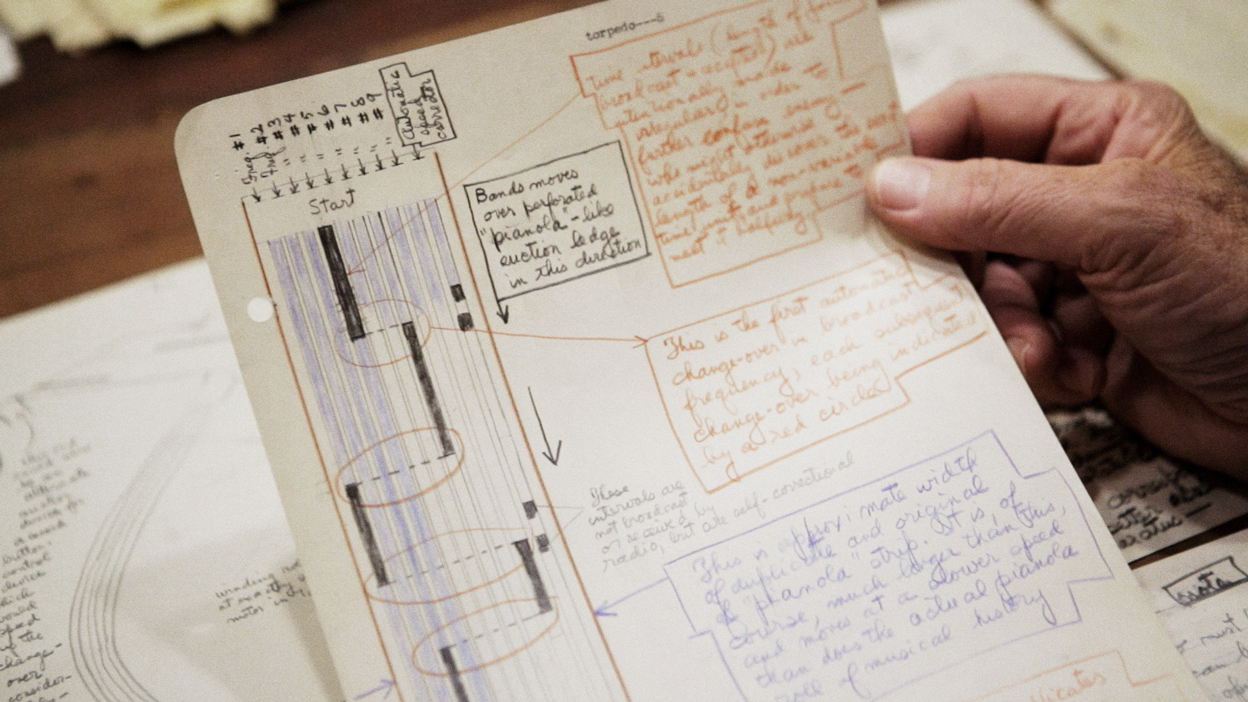The movie star who doubled as a groundbreaking inventor
- Text by Daniel Dylan Wray

Whenever Hedy Lamarr used to come home after a long day on set, she’d stay up all night. Back in the 1940s, actors would retire to bed with a studio-issued sleeping pill – knocking them out before an ‘upper’ brought them back around.
But Hedy Lamarr was different. She’d hover over her drafting table by lamplight, toying with test tubes or filling notebooks with ideas. “Any girl can be glamorous,” Hedy once said. “All you have to do is stand still and look stupid.”

Yet over the course of an extraordinary career, Hedy was less known for her groundbreaking research and more for a life of controversy. It began when she starred in the first mainstream film to show sexual intercourse and a female orgasm, 1933’s Ecstasy.
A scandal erupted and, after a failed marriage, the actress fled Nazi Germany, desperate to start over. Still going by her birth name Hedwig Kiesler, she plotted her way onto the roster of MGM studio mogul Louis B. Mayer, who rebranded her in the US as “Hedy Lamarr: the world’s most beautiful woman.”
But life as a Hollywood star took its toll and Hedy’s twilight years were spent as a recluse in Miami. It’s a legacy so complex that just retelling it – let alone forming a clear picture of who Hedy really was – becomes fraught with difficulty. “It wasn’t her beauty and it wasn’t her brains,” says director Alexandra Dean, recalling what inspired her to make Bombshell: The Hedy Lamarr Story. “It was her bravery, how bold she was.”
The documentary follows Hedy’s quest to use her star status as a platform to get ideas heard. After dating billionaire Howard Hughes, she harnessed his resources to develop her own engineering concepts (like improving traffic stop lights) while helping out on some of his (like how to get planes to fly faster).
A self-taught inventor, Lamarr studied up on birds and fish, then drew an aerodynamic design that combined both of their features. “You’re a genius,” was Hughes’ response. “She just had this wonderful mind that knew how to design a better airplane wing,” Alexandra says now. “Can you imagine having the self-confidence to do that? It’s inspiring.”
Hedy’s most significant invention was one she worked on with the avant-garde composer George Antheil. The pair wanted to help the Allied cause during WWII, so they began designing a radio guidance system that allowed torpedos to avoid enemy detection. Ultimately it was rejected by the Navy and Hedy was told that she’d be more helpful as a fundraiser, using her celebrity status to sell war bonds and entertain troops.

But after raising millions of dollars doing exactly that, her patent was seized when she was deemed an alien due to her Austrian nationality. Twenty years later, with her name removed from the invention, her technology was put to use during the Cuban Missile Crisis. “Sons of bitches!” Mel Brooks howls when he learns of this in the film.
Those very same principles are now a core component of Wi-Fi, Bluetooth, GPS and various military technology – an invention with an estimated market value of $30bn. To make matters worse, it’s been disputed that Hedy came up with the idea at all, with some believing she stole it from the Nazis and hid it in her shoe – an assertion Bombshell proves false.
But the film isn’t just about an uncredited inventor. It’s about a woman who had a paradoxical relationship to her appearance, which opened doors but stopped her from being taken seriously. “I think of her as a superhero,” Alexandra says. “She just wouldn’t accept what people said about her beauty. She would let it give her this incredible power, let it propel her forward into these elite worlds, and then use her brains.”

As Hedy grew older, that became more difficult. She got hooked on methamphetamines, believing she was taking B12 injections, which made her behave erratically. She also became estranged from her family, was arrested for shoplifting and underwent a series of botched plastic surgeries. The press, meanwhile, depicted this as a sensational fall from grace.
“She spent her whole life telling people, ‘Don’t judge me on my face’, and then the minute she starts to lose her beauty, it’s as if she flips over and has to acknowledge how much power it’s given her,” says Alexandra. “Then she tries to fix the problem and loses her superpowers. She loses her conviction that she is so much more than that face.”
Back then, the director explains, Hollywood was a brutal machine that treated contracted actors like slaves. “It was so difficult to endure psychologically that, when you consider how many drugs actors were asked to take on top of that, they didn’t stand a chance.”
But rather than view Hedy’s life as a tale of lost potential, Alexandra feels it makes her accomplishments all the more remarkable. “Hedy really was so strikingly brave that she never accepted any of the constraints that the world was trying to put around her. She was a true escape artist.”
Bombshell: The Hedy Lamarr Story is in cinemas and available on-demand from 9 March.
This article appears in Huck 64 – The Journeys Issue. Buy it in the Huck Shop or subscribe to make sure you never miss another issue.
You might like

We took techno legend Chris Liberator to a virtual rave, here’s what went down
Stay acid forever — With VR experience In Pursuit of Repetitive Beats currently running at London's Barbican Centre, Simon Doherty brought the acid punk figurehead along to see what he thought, and reflect on the health of the rave scene today.
Written by: Simon Doherty

Misan Harriman: “The humanity I bear witness to is extraordinary”
Shoot the People — Following the premiere of a new film exploring the photographer’s work and driving forces, we caught up with him to chat about his rapid rise, shooting protests and the need for powerful documentarians in times of struggle.
Written by: Isaac Muk

In The Road to Patagonia, Matty Hannon holds “a mirror to the human condition”
From tip to tip — More than a surf and travel documentary, the Australian filmmaker meditates on capitalism’s pitfalls and the importance of existing within nature while embarking on a marathon journey from Alaska to Tierra del Fuego.
Written by: Sam Haddad

On Alexander Skarsgård’s trousers, The Rehearsal, and the importance of weirdos
Freaks and Finances — In the May edition of our monthly culture newsletter, columnist Emma Garland reflects on the Swedish actor’s Cannes look, Nathan Fielder’s wild ambition, and Jafaican.
Written by: Emma Garland

New documentary revisits the radical history of UK free rave culture
Free Party: A Folk History — Directed by Aaron Trinder, it features first-hand stories from key crews including DiY, Spiral Tribe, Bedlam and Circus Warp, with public streaming available from May 30.
Written by: Isaac Muk

Stacy Peralta
A Questioning Mind — Dogtown legend Stacy Peralta captured the history of skateboarding and big-wave surfing and educated the masses. Now his eye is focused on America’s most notorious gangs.
Written by: Jay Riggio

